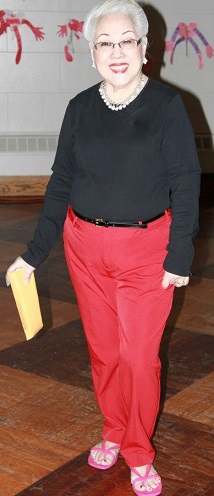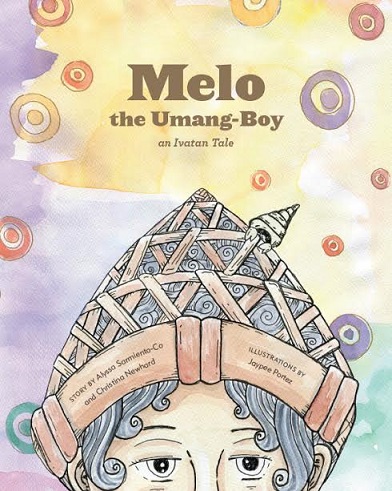Sari-Sari Storybooks publisher Christina Newhard creates books using Philippine regional languages
By Cristina DC PastorMelo, a shy boy from a tiny village in Batanes, goes fishing with his uncle. A flying fish pulls him to a magical city at the bottom of the ocean. There, the sea creatures are always busy and have no time to talk to him. Suddenly, there is a loud explosion. The creatures in this strange place are thrown into panic, and Melo must overcome his shyness to help the sea creatures work together to rebuild their city.
This curious ‘umang’ (hermit crab) boy with his juvenile valor is just one of the characters in Christina Newhard’s charming picture books series published by Sari-Sari Storybooks. “Melo the Umang-Boy” is first in the collection, followed by “Kalipay and the Tiniest Tiktik,” and “Amina and the City of Flowers.” The three are written, respectively, in the Batanes language Ivatan, the Visayan language Cebuano, and Zamboanga’s Spanish Creole Chavacano language.
“I wanted Filipino children to see themselves, to feel like they’re heroes of the story,” said Christina when interviewed by The FilAm. She said promoting language revival is another objective.
She remembers how the book series was imagined four years ago in her Brooklyn home. She was restless, “unhappy with my job,” about to embark on her own consultancy business, and looking to start a project “from a design perspective.”
“I was looking at how design can strengthen Filipino culture in a meaningful way,” she said.
Sari-Sari Storybooks was created out of this desire. Targeting Filipino children (ages 5-8) with stories written to under-represented Philippine languages seemed a way to promote cultural pride via graphic design. She brainstormed with friend and consultant, Alyssa Sarmiento-Co, who at the time, was a student of Media Studies at The New School, to help shape the growing project.
Christina laughed at the irony. Her Tagalog – the most widely Filipino spoken — is “not really that great” and yet here she is working with regional languages and figuring out a way to “connect Filipino-American children to their heritage.”
She and Alyssa co-wrote Melo, which was later translated into Ivatan by schoolteacher and native speaker Criselda Vinalay. Ivatan artist Jaypee Portez did the illustrations.
“When you think of the books you loved as a child, did any have Filipino heroes? Were they set in a Spanish-Creole-speaking city at the tip of the Sulu Archipelago? Did they take you to an underwater city filled with sassy, multi-tasking sea creatures? Did they introduce you to the quirky monsters of Philippine folklore, or teach you how to apologize to fairies?” These are questions that Sari-Sari Storybooks seeks to answer for future generations.
When she was growing up, she loved reading. She devoured Scottish writer Andrew Lang’s children’s fiction, such as “The Blue Fairy Book,” “The Green Fairy Book,” and “The Red Fairy Book,” which she found “enchanting.” Could it be the seed for Sari-Sari Storybooks may have been planted much earlier?
Youngest of 4 daughters
Born in the Philippines, Christina came to the U.S. at age 10. Her father, who was working for American Express in Japan, visited Manila and met her mother, a flight stewardess. They wed in the Philippines. The Newhard family, of which she is the youngest of four daughters, made their home in Okinawa for two years, then in Manila for 20 years, before finally moving to Florida.
After graduating from the University of Florida with a B.A. in Graphic Design, Christina moved to New York. She worked for 15 years as in-house designer at Columbia University’s Department of Publications (now called Columbia Creative) doing print design, including branding, logos, posters, and book covers. She currently runs her own design consultancy, Newhard Design, after 20 years in the industry.
“Sari-Sari Storybooks fill a unique space because they’re written to under-represented Philippine language groups,” she said in her Kickstarter campaign. “These books promote language renewal by targeting young speakers of languages like Ivatan, Cebuano, Chavacano, Waray, Ayta, and Meranaw.”
Melo is currently with the printer and ready to run, but Kalipay and Amina are still in illustration stage. A Kickstarter project, which raised more than $18K, ended recently which should give the process a push.
Each book costs more than $6K to print, according to Christina, although her printers are located in Singapore and Manila. Costs for illustrations and translations are additional, but “I’m committed to this project,” she said.
She is eager to complete the first series of three books – Melo, Kalipay and Amina — and see Filipino children read them. She is hoping the Philippine Department of Education would find them worthy of inclusion in its multilingual program.













I’m impressed. Educative and entertaining site.